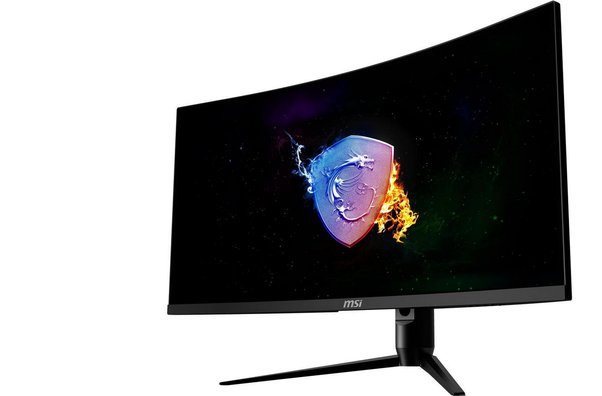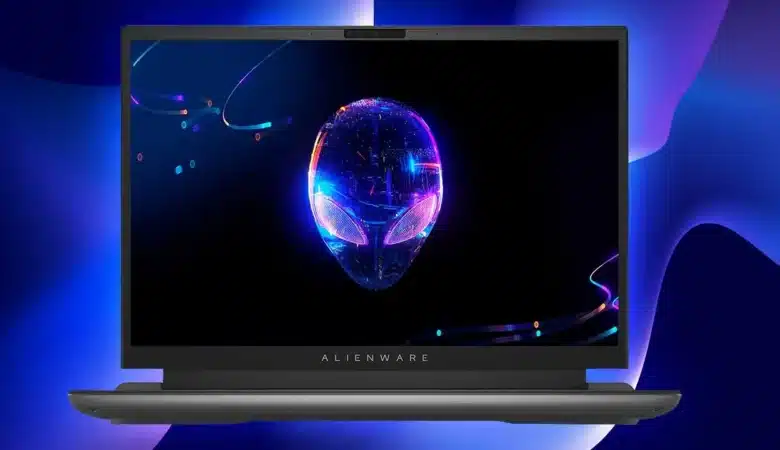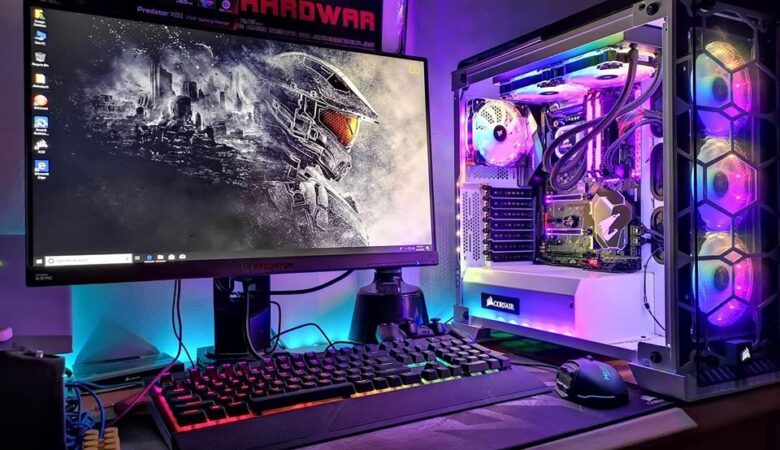A 60 Hz monitor is a common choice due to its affordability and compatibility with most computers and gaming consoles. While it provides a smooth viewing experience for general tasks, it may not be ideal for competitive gaming or fast-paced content that benefits from higher refresh rates.
When buying a 4k 60 hz monitor, consider the display size, resolution, panel type (e.g., TN, IPS), response time, connectivity options (e.g., HDMI, DisplayPort), adjustability features, color accuracy, viewing angles, and overall build quality to ensure it meets your specific needs and preferences.
Top 3 60 Hz Monitors
Acer K202HQL bi 19.5” HD+
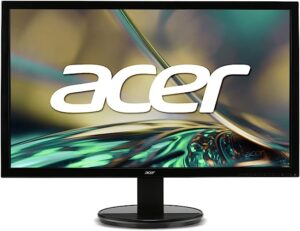
When buying the Acer K202HQL bi 19.5″ HD+ monitor, consider factors such as its screen size and resolution, panel type (e.g., TN), response time, connectivity options (e.g., VGA, DVI), ergonomic features (e.g., adjustable stand), color accuracy, viewing angles, and overall build quality to ensure it meets your specific requirements.
Pros: Affordable price, compact size, HD+ resolution, decent image quality, multiple connectivity options, and VESA mount compatibility.
Cons: Limited viewing angles, average color accuracy, lack of ergonomic adjustments, lower refresh rate (60 Hz), and no built-in speakers or USB ports.
User reviews for the Acer K202HQL bi 19.5″ HD+ monitor are mixed. Some users appreciate its affordability and image quality, while others criticize its limited viewing angles and lack of ergonomic features. Ratings range from average to good.
Thinlerain PC Monitor
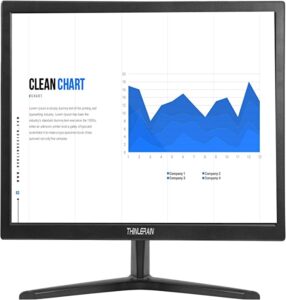
Pros: Affordable price, 60 Hz refresh rate, multiple connectivity options, decent image quality, and satisfactory color accuracy.
Cons: Potential for limited viewing angles, average response time, lack of advanced features, limited availability and brand recognition, and potential variability in build quality and customer support.
When purchasing a Thinlerain 1080p 60 hz monitor, it is important to consider factors like screen size, resolution, panel type (IPS, TN), response time, connectivity options (HDMI, DisplayPort), color accuracy, viewing angles, ergonomic features, build quality, warranty, and customer reviews to ensure it aligns with your requirements and preferences.
Feihe 17 Inch Computer Monitor
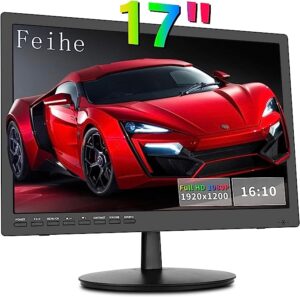
When buying a Feihe 17-inch computer 60 Hz monitor, consider factors such as the display size and resolution, panel type (e.g., TN, IPS), response time, connectivity options (e.g., HDMI, VGA), color accuracy, viewing angles, build quality, warranty, customer reviews, and the reputation of the brand to ensure it meets your specific needs.
Pros: Compact size, affordable price, 60 Hz refresh rate, multiple connectivity options, suitable for small spaces, and potential decent image quality.
Cons: Limited screen real estate, lower resolution, potential for average color accuracy and viewing angles, variable build quality, lack of advanced features, and limited availability and brand recognition.
Comparison of 60 Hz Monitor
| Monitor Model | Acer K202HQL bi 19.5″ HD+ | Thinlerain PC Monitor | Feihe 17 Inch Computer Monitor |
| Display Quality and Resolution | HD+ (1366 x 768) | Varies | Varies |
| Panel Type | TN | Varies | Varies |
| Response Time | Varies | Varies | Varies |
| Input Lag | Varies | Varies | Varies |
| Connectivity Options | VGA, DVI | Varies | HDMI, VGA, Varies |
| Ergonomics and Adjustability | Limited | Varies | Varies |
| Price and Value for Money | Affordable | Varies | Varies |
How to Choose the Best 60 Hz Monitor?
- Screen size and aspect ratio: Determine the ideal size and aspect ratio for your workspace and usage needs.
- Panel technology: Choose between TN (fast response times), IPS (better color accuracy and wider viewing angles), or VA (deeper blacks and better contrast).
- Refresh rate and response time: Look for a 60 Hz refresh rate and a low response time to minimize motion blur and input lag.
- Additional features: Consider features like adaptive sync (e.g., AMD FreeSync or NVIDIA G-Sync), HDR (high dynamic range), and built-in speakers or USB ports.
- Budget and pricing: Set a budget and compare prices to find the best value for the features and specifications you require.
Tips for Optimizing Your 60 Hz Monitor
- Adjust display settings: Fine-tune brightness, contrast, and gamma settings to enhance image quality and reduce eye strain.
- Calibrate colors and contrast: Use monitor calibration tools or software to achieve accurate color reproduction and optimal contrast levels.
- Reduce motion blur: Enable motion blur reduction settings, if available, or adjust response time settings to minimize blurring during fast-paced activities.
- Prevent screen tearing: Enable VSync or use adaptive sync technologies like AMD FreeSync or NVIDIA G-Sync to synchronize your monitor’s refresh rate with the graphics card output, reducing screen tearing.
People Also Ask
What is a 60 Hz monitor?
A 60 Hz monitor refers to a display that refreshes the screen 60 times per second. It means the monitor can display up to 60 frames per second, providing a smooth viewing experience for everyday tasks.
Is a 60 Hz monitor suitable for gaming?
While a 60 Hz monitor can handle gaming, it may not be ideal for competitive gaming or fast-paced games. Higher refresh rate monitors, such as 144 Hz or 240 Hz, offer smoother motion and reduced motion blur, which can provide a better gaming experience.
Can a 60 Hz monitor be used for video editing?
Yes, a 60 Hz monitor can be used for video editing. While higher refresh rates can enhance the editing experience by providing smoother playback, a 60 Hz monitor can still handle video editing tasks effectively. Color accuracy and resolution are also important considerations for video editing, regardless of the refresh rate.
How does a 60 Hz monitor compare to higher refresh rate monitors?
Are 60 Hz monitors cheaper compared to higher refresh rate monitors?
Yes, generally, 60 Hz monitors tend to be cheaper compared to higher refresh rate monitors. The cost of manufacturing higher refresh rate panels and the demand for such monitors contribute to their higher price.

